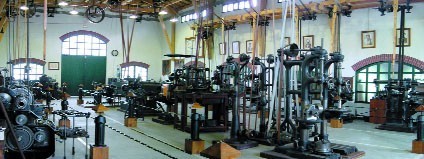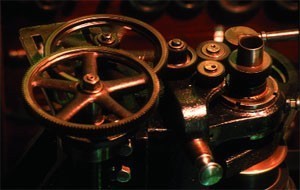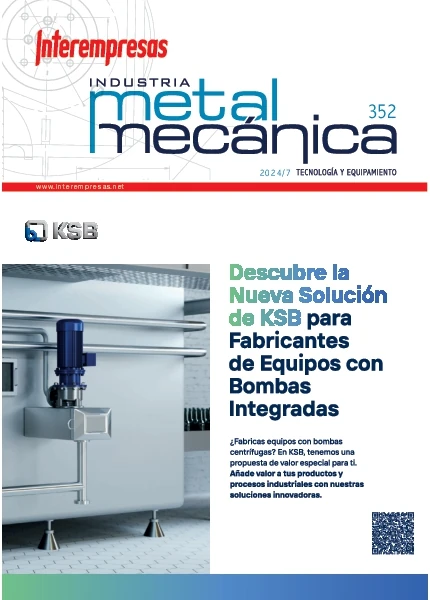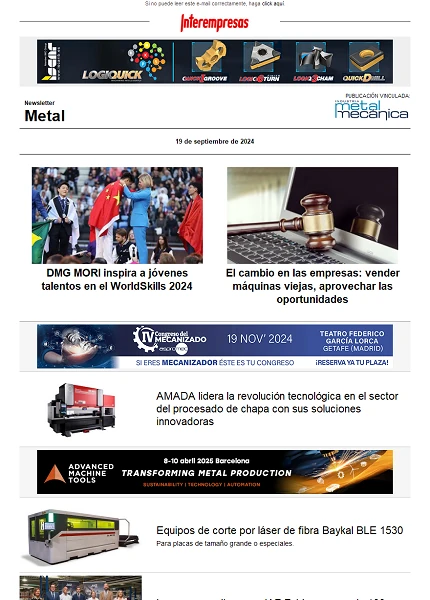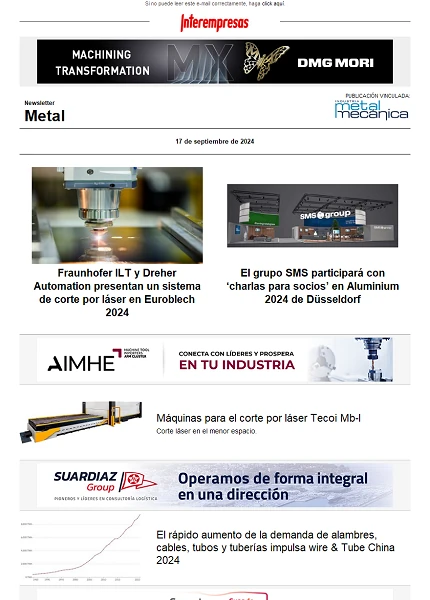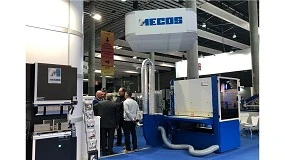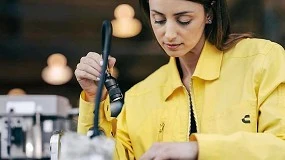El Museo de Máquina-Herramienta de Elgoibar

El Museo de Máquina-Herramienta está situado en la villa de Elgoibar (Guipúzcoa), lugar de conocida tradición industrial desde la antigüedad y principal población productora de máquinas-herramienta a nivel del estado español.
Esta situación se ha alcanzado después de muchos años de trabajo y esfuerzo, principalmente a partir de la guerra civil (año 1936); teniendo en cuenta a los pioneros de Eibar y Elgoibar que construyeron las primeras máquinas a finales del siglo XIX. Hasta la aparición del control numérico y su aplicación generalizada en los años pasados, el parque productivo estaba formado por máquinas convencionales de modelos que, en el transcurso del tiempo, habían sufrido pocas innovaciones. En estas circunstancias no era difícil encontrar máquinas funcionando fabricadas durante el siglo XIX, o copias de modelos fabricados en esa época.
En la actualidad, todas estas máquinas fabricadas antes de la guerra civil están desapareciendo, siendo cada vez más difícil encontrar modelos antiguos en general y en concreto las primeras máquinas fabricadas en la comarca por Cruz Ochoa, J. L. Ciaran y Eulogio Estarta. Entre otras razones, esta situación nos ha obligado, desde hace algunos años, a crear este Museo de Máquina-Herramienta, donde se presenta e investiga la historia social, económica e industrial relacionada con el mundo de la máquina-herramienta y su importancia en la comunidad autónoma vasca.

Pedro Ortuondo, Director de la Fundación Museo Máquina-Herramienta
Un museo vivo que funciona
Tratamos de ofrecer a nuestro entorno un nuevo concepto de museo industrial: es un museo “vivo”, con todas las instalaciones y máquinas en funcionamiento, que reproduce fielmente el ambiente de un taller de principios de siglo XX.
Este museo monográfico es el escaparate de la historia y evolución de la máquina-herramienta y de los hombres que la hicieron posible. Hemos conseguido recuperar y poner en marcha un amplio número de máquinas, totalmente restauradas. Además, disponemos de importante documentación antigua sobre procesos de fabricación, constitución mercantil de sociedades... lo cual completa una amplia panorámica de los orígenes de nuestra industrialización.
Las ofertas educativas son de carácter didáctico, y los programas de elaboración constituyen una vía de difusión imprescindible para la promoción del museo. Asimismo, ofrecemos este patrimonio a la población escolar, universitaria, entidades de interés y al público en general.
Nave central del Museo.
El Museo de Máquina – Herramienta de Elgoibar es una fundación sin fin lucrativo que, en la realización de sus objetivos, constituye y promociona un museo al servicio de la sociedad y de su desarrollo, abierto al público, dedicado a la búsqueda de testimonios y materiales del hombre y su entorno, que lo adquiere, conserva, comunica y expone con fines de estudio, educación y ocio.
Entre todos hemos puesto en marcha una Asociación de Amigos del Museo, que actualmente cuenta con 65 socios privados, la mayoría empresas del sector
Desde el primer momento las empresas de nuestro entorno se han implicado en el proyecto, entendiéndolo como propio, y participan activamente tanto en la financiación como en la difusión del Museo. Entre todos hemos puesto en marcha una Asociación de Amigos del Museo, que actualmente cuenta con 65 socios privados, la mayoría empresas del sector.
Contenido histórico y tecnológico
El contenido del Museo de Máquina-Herramienta es histórico y tecnológico. Muestra el desarrollo y evolución de la máquina–herramienta y su implicación en el contexto socioeconómico y cultural. En particular, en el ámbito vasco.
Los objetivos y finalidades de nuestra Fundación son:
- Recuperación, conservación, catalogación, restauración y exhibición ordenada de los fondos relacionados con el patrimonio industrial relacionado con la máquina-herramienta.
- Servir como recurso didáctico para mostrar la evolución tecnológica.
- Poner en marcha un servicio de documentación que, recogiendo la herencia del pasado, facilite el desarrollo tecnológico futuro del sector de máquinas-herramienta.
Hay tornos de pértiga y arco, accionados a pedal, como los que trabajaron el hierro y la madera desde la Edad Media
El contenido de este museo se expone en un edificio de nueva construcción, formado por una nave central y dos naves laterales donde se ubican un taller de mecanizado, un centro de documentación / sala de exposiciones y una herrería típica de comarca. Construido con diversas unidades temáticas y un rico conjunto de piezas de colección, disponemos de los modelos originales más representativos de máquinas–herramienta en funcionamiento, accionadas por transmisión aérea e instalados en un edificio que recoge fielmente el ambiente de un taller de principios del siglo XX. Se reproducen a la vista del visitante operaciones de mecanizado sobre hierro y acero, metales blandos y acabados de superficies con herramientas que el operador de máquinas las confecciona dependiendo de las necesidades de cada operación.
Taller de mecanizado 1900
La nave central (taller de mecanizado de 1900) lleva cubierta a dos aguas sostenida por llamativas cerchas de madera, de las que penden los soportes y ejes de transmisión con sus poleas. Este sistema de transmisión, está compuesto por en motor eléctrico de 3,5 CV a 1.500 rpm. que, unido por medio de una correa al eje central y comunicado por el mismo sistema de transmisión a dos ejes secundarios, transmite el movimiento a través de acoplamientos, poleas y correas. Mediante este sistema se puede contemplar un conjunto de máquinas realizando operaciones reales igual que lo hacían nuestros abuelos con las mismas máquinas.
Herrería
En la nave lateral derecha, en la que se ha respetado un tejo - símbolo de la historia de Guipúzcoa - hemos instalado una fragua de mampostería, fundamental y típica de las herrerías en nuestra comarca, completado con todos los utensilios necesarios para la fabricación de productos diversos (recordando que en el entorno de Elgoibar ya en el siglo XV se registra la existencia de más de veinte ferrerías).
Las ofertas educativas son de carácter didáctico, y ofrecemos este patrimonio a la población escolar, universitaria, entidades de interés y al público en general
Hay que destacar que se puede ver una muestra semimetálica “agoa” que se producía en estas ferrerías. A partir de ellas surgió otro de los sectores característicos de la cuenca del bajo Deba: la fabricación de armas, que también tiene su referencia en esta nave, porque a partir de ella surgieron las empresas dedicadas a la producción de máquinas-herramienta.
Centro de documentación / sala de exposiciones
La nave lateral izquierda está dedicada a recoger la evolución de las máquinas y utensilios con los que se trabajó el hierro y la madera desde la Edad Media: hay tornos de pértiga y arco, que son accionados a pedal. Entre ellos, destaca uno recuperado en Santa Cruz de Campezo. También mencionar la colección de taladros manuales, de los que hay una selección reseñable que cuenta con un berbiquí de cordel. En esta sala también se pueden encontrar dos modelos de torno de relojero, además de una sierra de ballestas del siglo XIX complemento de los tornos antes citados.
Para completar, se puede contemplar la evolución tecnológica e histórica de la máquina-herramienta a través de paneles explicativos, con más de 250 fotografías. Se recoge la historia del taladrado, torneado, fresado, barrenado, mandrinado, rectificado, forja y laminado, cepillado, limado y amortajado, acuñación y prensa, deformación y corte, etc.
Empresas o entidades relacionadas
Fundación Museo de Máquina-Herramienta


